MAX BOND LOW VISCOSITY A/B
Epoxy/Polyamide based resins are one of the best systems to use for applications that will be subject to water immersion and marine environments. It provides excellent resistance to salt water, acidic and caustic exposure and retains its physical properties even after prolonged water immersion.
2 GALLON COMBINED VOLUME (256 FL.OZ)
1 GALLON PART A (128 FL.OZ)
1 GALLON PART B (128 FL.OZ)
Items may be packaged in different container as shown
All containers used are UN and DOT approved for chemical packaging and shipping
Description
MAX BOND LOW VISCOSITY A/B is a two-part epoxy/polyamide resin system specially formulated to provide structural strength to a variety of marine and boat building uses such as structural fiberglassing, waterproofing, and high strength bonding application.
It is the low viscosity version (thinner) of MAX BOND family of marine grade resin systems providing improved ease of use and faster fiberglass fabric wetting.
Please note that the consistency of this formulation is similar 30-weight motor oil. It is only diluted from the base epoxy and curing agent formulation to yield ease of use and general fabric impregnation. Over dilution of the resin system
(below 1000 cPs similar to the consistency of mineral oil) are over diluted with lower functional epoxy diluents that will also dilute or lower the final cured mechanical strength. All the MAX BOND series of epoxy resin demonstrates excellent adhesion to polyester based marine hulls.
It is best suited for structural building and reinforcement, waterproofing and in all manners of boat building construction, repair, and maintenance.
MAX BOND LOW VISCOSITY A/B demonstrates negligible loss of mechanical properties from continuous water immersion. MAX BOND LOW VISCOSITY A/B will cure even in humid and low-temperature conditions. It is generally room temperature cured but can be snap cured at elevated temperatures for a short period of time.
MAX BOND LOW VISCOSITY A/B demonstrates structural bond strengths to a variety of substrates commonly used in the manufacturing of modern marine vessels of such as wood, steel, aluminum, copper and other metal alloys, polyester constructed fiberglass and most plastics.
MAX BOND LOW VISCOSITY A/B performs well in wide range of service temperature and resists cracking and delamination caused by repeated impact cyclic vibration, thermal expansion/contraction and physical breakdown due to continuous seawater immersion.
Bonds to Steel, Aluminum, Soft Metals, Concrete, Ceramic, Fiberglass, Composites
Non-Critical Mix Ratio, Equal Parts by Volume,
Brush, Roller Coat, Trowel Applied
Excellent Impact Resistance
Excellent Balance of Strength and Flexibility
Excellent Water/Salt Water Resistant for Marine/Aero Applications
Low Shrinkage, Wide range of service temperature
PHYSICAL PROPERTIES
Density (Mixed) | 1.10 gm/cc |
Form and Color | Part A – Clear Liquid |
Part B – Amber Liquid | |
Viscosity Mixed | 5,624 cPs @ 77°F (25ºC) |
Mix Ratio | Equal parts by weight or by volume |
Working Time | 65 Minutes @ 77°F (25ºC) (200 gm mass) |
Peak Exotherm | 280°F 300 gram mass |
Cure Time | 36 Hrs. Minimum |
Accelerated Heat Cure Time | 2 Hrs. @ room temperature plus |
120 min. @ 212°F (100°C) |
MECHANICAL PROPERTIES
Hardness | 85 Shore D |
Tee-Peel Strength | 3.7 Pounds Per Inch Width |
Compressive Strength | 12,300 psi @ 77°F (25ºC) |
Tensile Shear Strength | 3,800 psi @ 77°F (25ºC) |
1,900 psi @ -112°F (-80ºC) | |
1050 psi @ 212°F (100ºC) | |
Elongation | 2.3% Maximum Yield |
Service Temperature | -67°F to 250°F |
CHEMICAL RESISTANCE TEST
WEIGHT CHANGE IN PERCENT
Distilled Water | .7 % |
3% Salt Water | 1.2 % |
Sulfuric Acid 30% | 1.9 % |
Nitric Acid | 3.8 % |
Ammonia 10% | 3.7 % |
Sodium Hydroxide | 10.00 % |
Anti-Freeze or Motor Oil | No Effect |
THIS LOW VISCOSITY VERSION IS FORMULATED TO PROVIDE EASE OF USE SUITABLE FOR
FIBERGLASS WET-OUT AND IMPREGNATING APPLICATIONS FOR
WOOD SEALING AND COMPOSITES FABRICATING
Lower Viscosity For Easy Wet And Dry Layup Application
Improved Fiber Wet-Out
Brush, Roller Coat, Trowel Applied
Bonds Steel, Aluminum, Soft Metals, Concrete, Ceramic
High-Performance Resin For Composites Fabrication
Excellent Impact Resistance
Excellent Balance of Strength and Flexibility
Excellent Water/Salt Water Resistant for Marine/Aero Applications
Low Shrinkage And Dimensional Stability
Wide range of service temperature
BASICS STEPS OF WOOD SEALING AND WATERPROOFING
Click here to download the bulletin
View Our Wood Sealing and Waterproofing Bulletin
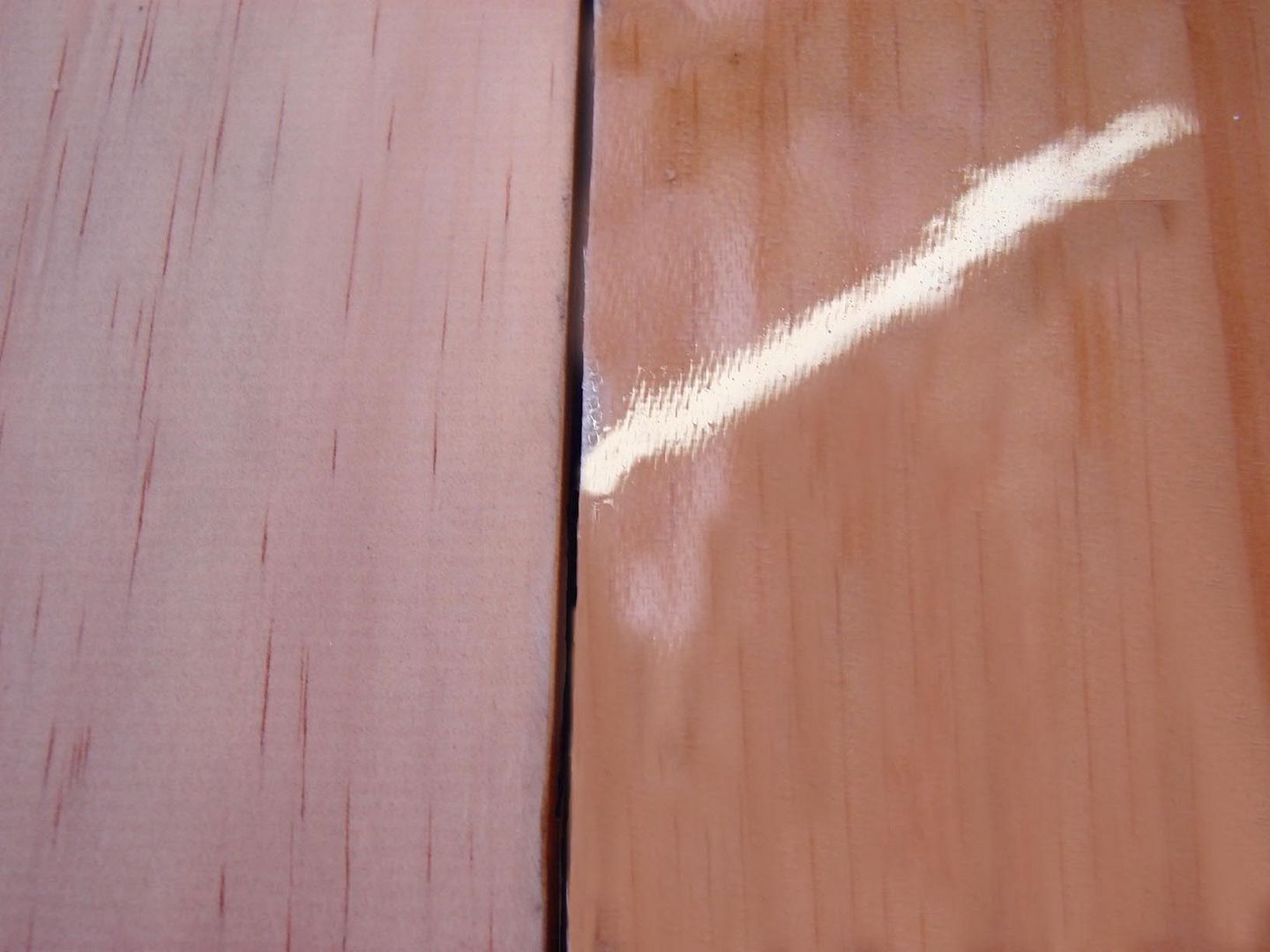
Fiberglassing over the seal wood for increase strength and stability
- Choose the proper fiberglass weight and weave for the job. Here are some good fiberglass style
STYLE 7500 10 Ounce per square yard plain weave fiberglass
Apply another coat of the epoxy, this time do not add any solvent to insure maximum strength development.
- Use a plastic spreader or flat plastic spreader to consolidate the fiberglass to wood. Use this to smoothen the fiberglass and remove excess resin and entrapped air bubbles.
- Allow the epoxy resin to cure for 24 hours.
- Upon cure, the cured laminate can be directly painted with a UV resistant polyurethane or acrylic paint to protect the epoxy resin from the damaging effects of direct UV (sunlight) exposure.
MAX BOND LOW VISCOSITY VERSION
LOW VISCOSITY VERSION PROVIDES EASE OF USE SUITABLE FOR COMPOSITE FABRIC IMPREGNATING
Available kit sizes
MAX BOND LOW VISCOSITY 32-OUNCE KIT • MAX BOND LOW VISCOSITY 1-GALLON KIT
MAX BOND LOW VISCOSITY 2-GALLON KIT • MAX BOND LOW VISCOSITY 10-GALLON KIT
PLEASE CALL OUR NEW TOLL FREE NUMBER FOR TECHNICAL ASSISTANCE
877 403 8008
MON-FRI 9:00 AM TO 4:30 PM PST
Each batch of resin and curing agent is tested for its basic physical property and must comply with the standard established by our product engineering group. All test procedures are governed by ASTM or American Standards Test Methods, Internally developed test procedures developed by our internal materials engineer that are a modification of an ASTM test procedure modified to determine or amplify the accuracy a specific physical or mechanical property of particular system; these are called ITMaS or Internal Test Methods And Standard.
WHICH EPOXY IS BEST FOR YOUR APPLICATION?
Epoxy based polymers are one of the most versatile thermoset plastics that can be modified into a multitude of applications and fit very specific task as demanded by the application. It offers ease of use and generally safer to handle over other types of thermoset resins which make it the choice material for many high-performance composites.
New ideas demand new technology in material science and the skill to compose its constituent into a synergistic composite.
What is impact testing?
Impact testing is one of the most revealing test methods that demonstrate a material's ability to resist and withstand a high-rate of pressure loading at a short amount of time. Its behavior during and after the impact can define its maximum mechanical property and conditional limits upon its destruction.
The impact resistance of an object provides the ultimate measure of its resistance to its definitive destruction. Governed by the many laws and dynamics of physics, a skilled chemist or materials engineer can determine the design equilibrium and ultimate performance by careful analysis of the material’s disassociation and the manner of its destruction.
With this knowledge, other aspects of mechanical performance can be accurately derived and through skillful engineering, one can determine the impact energies the part can withstand and design the construction that will resist such assaults over the projected life span.

Pictures contributed by our actual customer who used the
MAX BOND LOW VISCOSITY
Pictures contributed by Mr. Lee R.





JET SKI HULL FABRICATED WITH KEVLAR FABRIC IMPREGNATED WITH MAX BOND LOW VISCOSITY
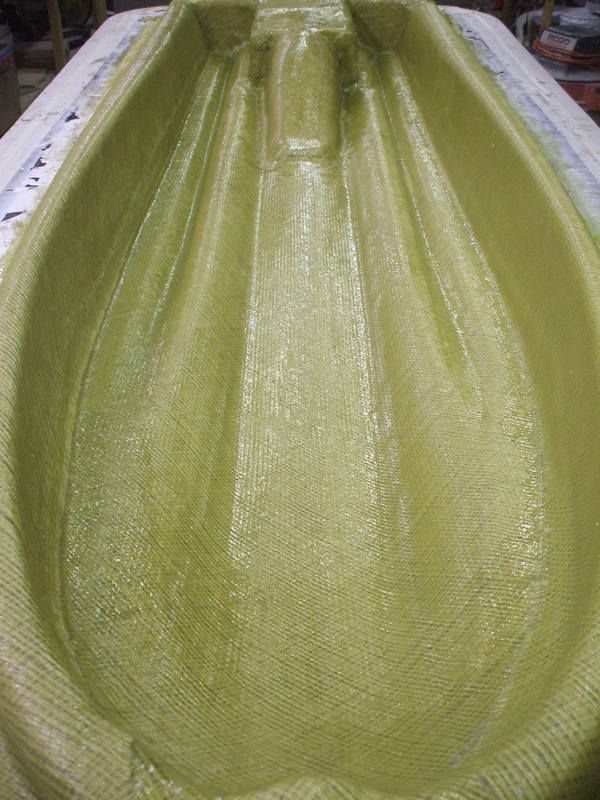


COMPLIMENTS OF Mr. Bill Y.
![]()

MIXING EPOXY RESINS
PLEASE VIEW THE FOLLOWING VIDEO PRESENTATION,
ALTHOUGH THE FEATURED EPOXY RESIN SYSTEM IS DIFFERENT THAN
THE MAX BOND LOW VISCOSITY, THE GENERAL TECHNIQUE AND PROPER MIXING PROCEDURE IS APPLICABLE.
USE THIS MIX TECHNIQUE TO ELIMINATE TACKY SPOTS, UNCURED SECTIONS AND POOR MECHANICAL PERFORMANCE THAT IS CAUSED BY POOR MIXING AND INCORPORATION OF THE RESIN AND CURING AGENT.
BASIC EPOXY RESIN MIXING AND USAGE APPLICATIONS
PLEASE VIEW THE FOLLOWING VIDEO FOR THE PROPER MIXING OF EPOXY RESINS. IT DEMONSTRATES THE PROPER TECHNIQUE OF MIXING ANY TYPE OF EPOXY RESIN. THE PROPER CURE AND FINAL PERFORMANCE OF ANY EPOXY RESIN SYSTEM IS HIGHLY DEPENDENT ON THE QUALITY AND THOROUGHNESS OF THE MIX. THE RESIN AND CURING AGENT MUST BE MIXED TO HOMOGENEOUS CONSISTENCY
THE PROPER CURE AND FINAL PERFORMANCE OF ANY EPOXY RESIN SYSTEM IS HIGHLY DEPENDENT ON THE QUALITY AND THOROUGHNESS OF THE MIXING QUALITY. THE RESIN AND CURING AGENT MUST BE MIXED TO HOMOGENEOUS CONSISTENCY TO ACHIEVE PROPER CURE AND TACK FREE RESULTS.

How to avoid tacky spots when using an epoxy resin: MAX EPOXY PROPER MIXING TECHNIQUE.wmv - YouTube
Video will open in a new window
Basic Epoxy Resin Usage - Avoiding Exothermic Runaway Reactions
Composite Fabricating Basics
General Guidelines By resolute definition, a fabricated COMPOSITE material is a manufactured collection of two or more ingredients or products intentionally combined to form a new homogeneous material that is defined by its performance that should uniquely greater than the sum of its individual parts. This method is also defined as SYNERGISTIC COMPOSITION.
COMPOSITE MATERIAL COMPOSITION
REINFORCING FABRIC & IMPREGNATING RESIN
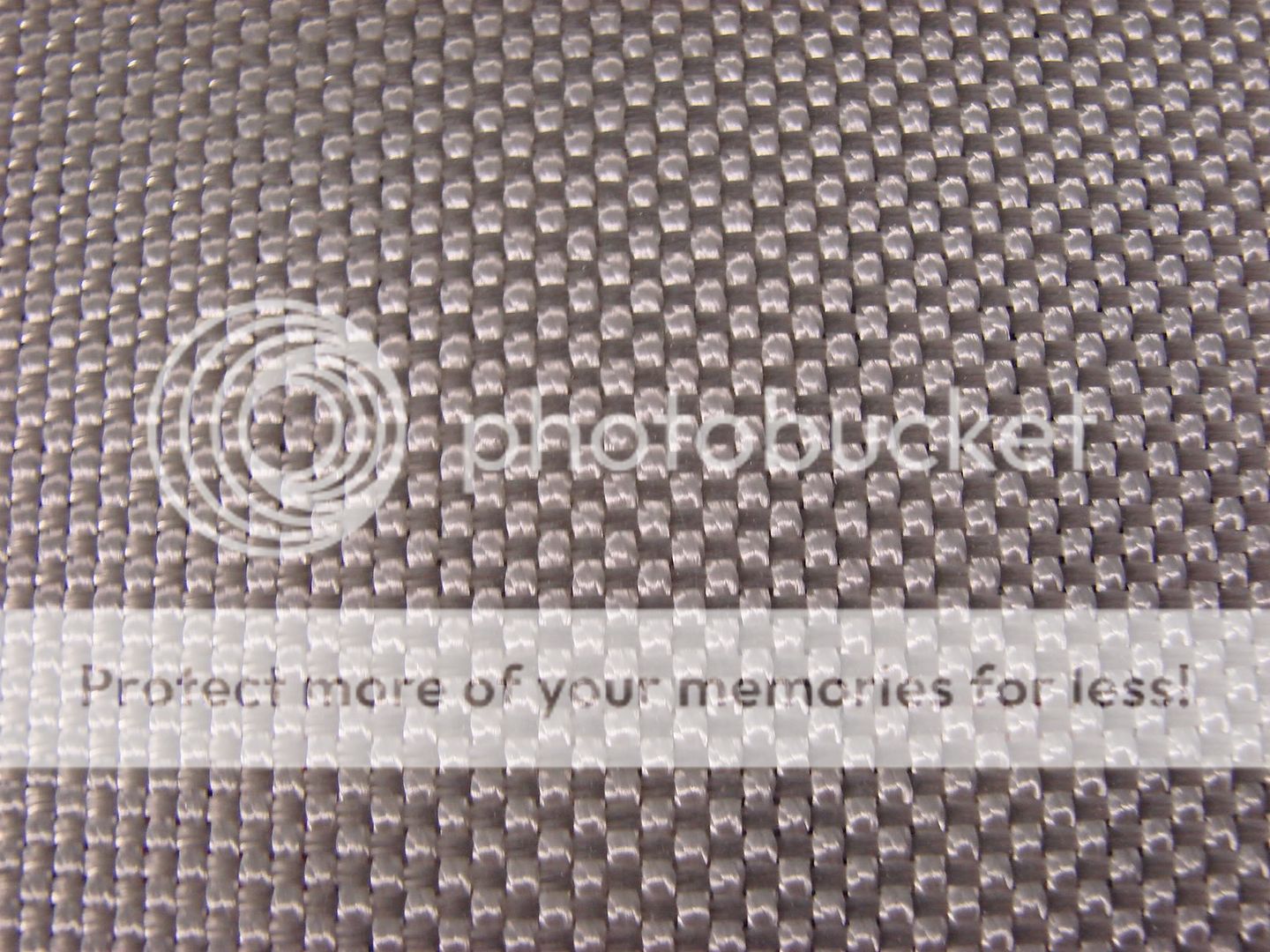 PLUS
PLUS 
ENGINEERED PROCESS
EQUALS
STRUCTURAL STRENGTH COMPOSITE LAMINATE

With respect to the raw materials selection (fabric and resin), the fabricating process and the intended composite properties, these 3 aspects must be carefully considered and in the engineering phase of the composite.
NEED MORE INFORMATION?
Please visit our YouTube Channel to view our video demonstrations
Step One: Fabric Selection TYPES OF FABRIC WEAVE STYLE AND SURFACE FINISHING FOR RESIN TYPE COMPATIBILITY Fabrics are generally considered ”balanced” if the breaking strength is within 15% warp to fill and are best in bias applications on lightweight structures. “Unbalanced” fabrics are excellent when a greater load is required one direction and a lesser load in the perpendicular direction.
- Tow: The bundle of individual carbon filaments used to weave carbon fabric. 50k tow means there are 48-50,000 carbon filaments in the tow. Smaller tow i.e. 12k, 6k, 3k and 1k are obtained by dividing the 50k tow into smaller bundles.
- Thread Count: The number of threads (tow in carbon and yarn in Aramid) per inch. The first number will be the warp count and the second will be the fill count.
- Fill: The threads that run the width of the roll or bolt and perpendicular to the warp threads.
- Warp: The threads that run the length of the roll or bolt and perpendicular to the fill threads.
- Finish: The chemical treatment to fiberglass making it compatible with resin systems, therefore improving the bond between the fiber and the resin. Finishing fiberglass typically decreases the fiber strength by as much as 50%. Both Silane and Volan finishes are epoxy compatible. Historically, Volan has been considered a softer finish for a more pliable fabric, but recent advances have yielded some excellent soft Silane finishes.
- Thickness: Measured in fractions of an inch. The thicker the fabric the more resin required to fill the weave to obtain a surface smooth finished part.
Weaves:
-
Plain weave means the warp and fill threads cross alternately. This is the most common weave.
-
4 Harness (4 HS Satin or crowfoot) weave means the fill thread floats over three warp threads, then under one warp thread. This weave is more pliable than the plain weave, therefore conforms to complex curves more easily.
-
8 Harness (8 HS Satin) weave means the fill thread floats over seven warp threads, then under one warp thread. This weave is the most pliable of the standard fiberglass weaves.
-
2 x 2 Twill weave means the fill thread floats over two warp threads, then fewer than two warp threads. This weave is found most commonly in carbon fabrics and is more pliable than plain weave.
Most fabrics are stronger in the warp than the fill because higher tension is placed on the warp fiber keeping it straighter during the weaving process. Rare exceptions occur when a larger, therefore stronger thread is used in the fill direction than the warp direction.
PLAIN WEAVE
Is a very simple weave pattern and the most common style. The warp and fill yarns are interlaced over and under each other in alternating fashion. Plain weave provides good stability, porosity and the least yarn slippage for a given yarn count.
8 HARNESS SATIN WEAVE
The eight-harness satin is similar to the four-harness satin except that one filling yarn floats over seven warp yarns and under one.
This is a very pliable weave and is used for forming over curved surfaces.
4 HARNESS SATIN WEAVE
The four-harness satin weave is more pliable than the plain weave and is easier to conform to curved surfaces typical in reinforced plastics. In this weave pattern, there is a three by one interfacing where a filling yarn floats over three warp yarns and under one.
2x2 TWILL WEAVE
Twill weave is more pliable than the plain weave and has better drivability while maintaining more fabric stability than a four or eight harness satin weave. The weave pattern is characterized by a diagonal rib created by one warp yarn floating over at least two filling yarns.
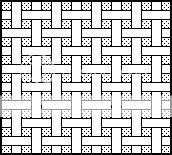
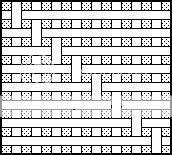


COMMERCIAL FIBERGLASS-FABRIC WEAVER Finishing Cross Reference And Resin Type Compatibility
RESIN COMPATIBILITY
Burlington Industries
Clark Schwebel
J.P Stevens
Uniglass Industries
Epoxy, Polyester
VOLAN A
VOLAN A
VOLAN A
VOLAN A
Epoxy, Polyester
I-550
CS-550
S-550
UM-550
Phenolic, Melamine
I-588
A1100
A1100
A1100
Epoxy, Polyimide
I-589
Z6040
S-920
UM-675
Epoxy
I-399
CS-272A
S-935
UM-702
Epoxy
CS-307
UM-718
Epoxy
CS-344
UM-724
Silicone
112
112
n-pH (neutral pH)
Satin Weave Style For Contoured Parts Fabricating
These styles of fabrics are one of the easiest fabrics to use and it is ideal for laying up cowls, fuselages, ducts and other contoured surfaces with minimal distortions. The fabric is more pliable and can comply with complex contours and spherical shapes. Because of its tight weave style,
satin weaves are typically used as the surface ply for heavier and courser weaves.
This technique helps reduce fabric print through and requires less gel coat to create a smoother surface.
SATIN WEAVE TYPE CONFORMITY UNTO CURVED SHAPES
Plain Weaves, Bi-axial, Unidirectional Styles For Directional High Strength Parts Use this weave style cloth when high strength parts are desired. It is ideal for reinforcement, mold making, aircraft and auto parts tooling, marine and other composite lightweight applications. PLAIN WEAVE STYLE FOR HIGH STRENGTH 
Please visit our eBay store for all available composite fabric suitable for your needs.
Step Two: Choose the best epoxy resin system FRP- FIBER REINFORCED PLASTIC. The epoxy resin used in fabricating a laminate will dictate how the FRP will perform when load or pressure is implied on the part. To choose the proper resin system, consider the following factors that is crucial to a laminate's performance. SIZE AND CONFIGURATION OF THE PART (NUMBER OF PLIES AND CONTOURED, FLAT OR PROFILED) CONSOLIDATING FORCE (FREE STANDING DRY OR HAND LAY-UP, VACUUM BAG OR PLATEN PRESS CURING) CURING CAPABILITIES (HEAT CURED OR ROOM TEMPERATURE CURED) LOAD PARAMETERS (SHEARING FORCE, TORSIONAL AND DIRECTIONAL LOAD, BEAM STRENGTH)ENVIRONMENTAL EXPOSURE The principal role of the resin is to bind the fabric into a homogeneous rigid substrate (OPERATING TEMPERATURE, AMBIENT CONDITIONS, HUMIDITY, CHEMICAL EXPOSURE, CYCLIC FORCE LOADING) MATERIAL AND PRODUCTION COST
(BUYING IN BULK WILL ALWAYS PROVIDE THE BEST OVERALL COSTS AS WELL AS DOING IT RIGHT THE FIRST TIME)
These factors will dictate the design and the composition of the part and must be carefully considered during the design and engineering phase of the fabrication.
OUR GENERAL EPOXY RESIN SYSTEM SELECTION FORMULATED FOR SPECIFIC APPLICATIONS
Step Three:
Proper Lay-Up Technique
Pre-lay-up notes
Lay out the fabric and pre-cut to size and set aside
Avoid distorting the weave pattern as much as possible
For fiberglass molding, ensure the mold is clean and adequate mold release is used
View our video presentation above "MAX EPOXY RESIN MIXING TECHNIQUE"
Mix the resin only when all needed materials and implements needed are ready and within reach
Mix the proper amount of resin needed and be accurate proportioning the resin and curing agent. Adding more curing agent than the recommended mix ratio will not promote a faster cure. Over saturation or starving the fiberglass or any composite fabric will yield poor mechanical performance. When mechanical load or pressure is applied to the composite laminate, the physical strength of the fabric should bear the stress and not the resin. If the laminate is over saturated with the resin it will most likely to fracture or shatter instead of rebounding and resist damage.
Don’t how much resin to use to go with the fiberglass?
A good rule of thumb is to maintain a minimum of 30 to 35% resin content by weight, this is the optimum ratio used in high-performance prepreg (or pre-impregnated fabrics) typically used in aerospace and high-performance structural application.For general hand lay-ups, calculate using 60% fabric weight to 40% resin weight as a safety factor. This will ensure that the fabricated laminate will be below 40% resin content depending on the waste factor accrued during fabrication.
Place the entire pre-cut fiberglass to be used on a digital scale to determine the fabric to resin weight ratio. Measuring by weight will ensure accurate composite fabrication and repeatability, rather than using OSY data.
Typical fabric weights regardless of weave pattern
1 yard of 8 OSY fabric at 38 inches wide weighs 224 grams
1 yard of 10 OSY fabric at 38 inches wide weighs 280 grams
Ounces per square yard or OSY is also known as aerial weight which is the most common unit of measurement for composite fabrics.
To determine how much resin is needed to adequately impregnate the fiberglass, use the following equation:
(Total Weight of Fabric divided by 60%)X( 40%)= weight of mixed resin needed
OR
fw= fabric weight
rc= target resin content
rn=resin needed
MASTER EQUATION
(fw/60%)x(40%)=rn
FOR EXAMPLE
1 SQUARE YARD OF 8-OSY FIBERGLASS FABRIC WEIGHS 224 GRAMS
(224 grams of dry fiberglass / 60%) X 40% = 149.33 grams of resin needed
So for every square yard of 8-ounce fabric,
It will need 149.33 grams of mixed resin.
Computing for resin and curing agent requirements based on
149.33 grams of resin needed
MIX RATIO OF RESIN SYSTEM IS 2:1 OR
50 PHR (per hundred resin)
2 = 66.67% (2/3)
+
1 = 33.33%(1/3)
=
(2+1)=3 or (66.67%+33.33%)=100% or (2/3+1/3)= 3/3
149.33x 66.67%= 99.56 grams of Part A RESIN
149.33x 33.33%= 49.77 grams of Part B Curing Agent
99.56+ 49.77 = 149.33 A/B MIXTURE
GENERAL FIBERGLASSING AND FRP FABRICATION
Apply the mixed resin onto the surface and then lay the fabric and allow the resin to saturate through the fabric.
NOT THE OTHER WAY AROUND
This is one of the most common processing error that yields sub-standard laminates. By laying the fiberglass onto a film of resin, fewer air bubbles are entrapped during the wetting-out stage. Air is pushed up and outwards instead of forcing the resin through the fabric which will entrap air bubbles. This technique will displace air pockets unhindered and uniformly dispersed throughout the fiberglass with minimal mechanical agitation or by spreading.
A 4 X 8 FEET 3/8 INCH THICK FIBERGLASS PANEL WAS FABRICATED WITH 18 PLIES OF 24 OUNCE FIBERGLASS ROVING IMPREGNATED WITH MAX GPE RESIN SYSTEM. THE PANEL WAS VACUUM CURED FOR 24 HOURS AT ROOM TEMPERATURE AND THEN POST-CURED FOR 2 HOURS AT 200°F AND THEN TESTED USING ASTM D695 TEST PROCEDURE. 


32 PERCENT AVERAGE RESIN CONTENT 



DETERMINATION OF FIBER TO RESIN RATIO
PLACE CURSOR ON THE PICTURE TO PAUSE AND PLAY SLIDE SHOW
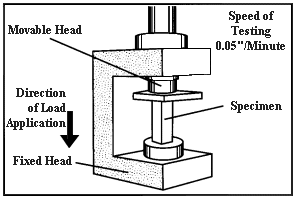
NOTE THE MODE OF FAILURE OF THE COMPRESSION SPECIMENS ILLUSTRATING A CROSS AXIS FROM THE TOP AND BOTTOM PF THE SPECIMEN. UNDER MAGNIFIED EXAMINATION, EVIDENCE OF RESIN MATRIX RESIDUE WAS PRESENT ON EACH PLY OF THE FIBERGLASS, THIS MODE OF FAILURE DENOTES A COHESIVE FAILURE OR A DIRECT SPLITTING OF THE RESIN ITSELF. 15,116 PSI MAXIMUM COMPRESSIVE STRENGTH
For Vacuum Bagging And Resin Infussion Process
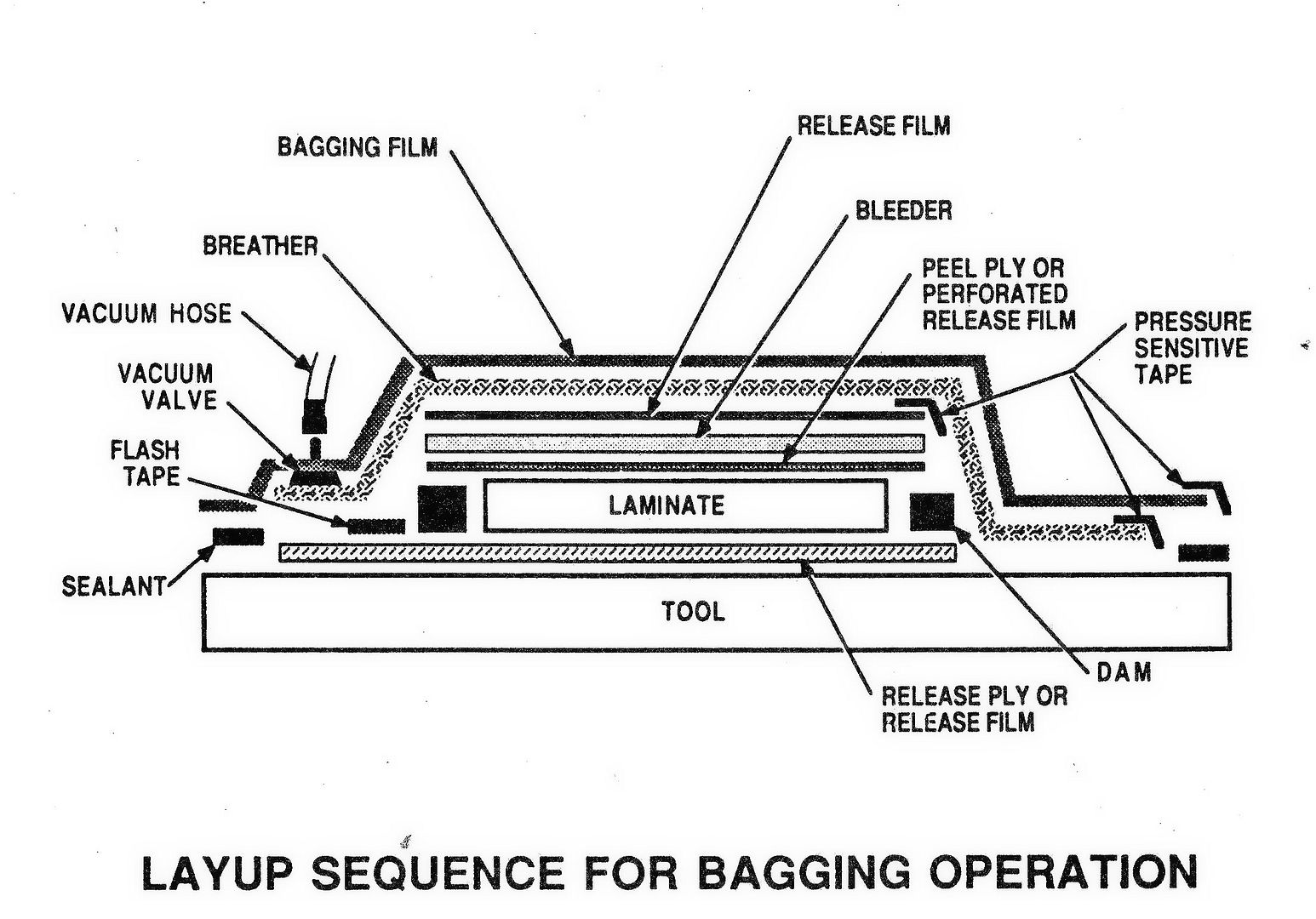
Step Four: Proper Curing Allow the lay-up to cure for a minimum of 24 to 36 hours before handling. Optimum cured properties can take up to 7 days depending on the ambient cure condition. The ideal temperature cure condition of most room temperature epoxy resin is 22-27 degrees Celsius at 20%. Higher ambient curing temperatures will promote faster polymerization and development of cured mechanical properties. Improving mechanical performance via post heat cure A short heat post cure will further improve the mechanical performance of most epoxy resins. Allow the applied resin system to cure at room temperature until for 18 to 24 hours and if possible, expose heat cure it in an oven or other sources of radiant heat (220°F to 250°F) for 45 minute to an hour. You can also expose it to direct sunlight but place a dark colored cover, such as a tarp or cardboard to protect it from ultraviolet exposure. In general room temperature cured epoxy resin has a maximum operating temperature of 160°F or lower A short heat post cure will ensure that the mixed epoxy system is fully cured, especially for room temperature cured system that can take up to 7 days to achieve 100% cure Some darkening or yellowing of the epoxy resin may occur if overexposed to high temperature (>250 F).
AMINE BLUSH The affinity of an amine compound (curing agent) to moisture and carbon dioxide creates a carbonate compound and forms what is called amine blush. Amine blush is a wax-like layer that forms as most epoxies cure. If the epoxy system is cured in extreme humidity (>70%). It will be seen as a white and waxy layer that must be removed by physical sanding of the surface followed by an acetone wipe. Although we have formulated the MAX CLR, MAX BOND and MAX GPE product line to be resistant to amine-blush, it is recommended not to mix any resin systems in high humidity conditions, greater than 60%. Always make sure that the substrate or material the epoxy resin system is being applied to is as dry as possible to ensure the best-cured performance.
OTHER TYPES OF EPOXY RESIN CURE MECHANISM LATENT CURING SYSTEMS Latent epoxy resins are systems that are mixed together at room temperature and will begin polymerization but it will not achieve full cure unless it is exposed to a heat cure cycle. In general, these are high-performance systems that demonstrate exceptional performance under extreme conditions such as high mechanical performance under heat and cryogenics temperatures, chemical resistance or any environment that epoxy room temperature system perform marginally or poorly. Upon the mixing of the resin and curing agent polymerization will begin and will only achieve partial cure. Some resins may appear cured or dry to the touch, this state is called 'B-Stage Cure' ,but upon application of force will either be gummy or brittle almost glass-like and will dissolve in most solvents. The semi-cured resin must be exposed to an elevated temperature for it to continue polymerization and achieve full cure. UV CURING SYSTEMS
Similar to "addition cure" or catalytic polymerization, Ultraviolet Curing is another method that has gained popular use in the polymer adhesives and coatings application. It offers a unique curing mechanism that converts a liquid polymer into a solid plastic upon exposure to UV radiation. The two common commercially significant method are "FREE RADICAL INITIATION" and CATIONIC REACTION. In both reaction polymerization occurs via decomposition of a Photoinitiator blended within the resin system; upon exposure to the adequate wavelength of Ultraviolet energy the photoinitiator degrades and cause a ring opening or cleavage of the photoinitiator molecule and induces rapid polymerization or cross-linking.
The polymerization reaction can be either free radical or cationic and occurs almost instantaneous creation of a polymer network.
HEAT ACTIVATED CURING SYSTEMS This type of epoxy system will not polymerize unless it is exposed to the activation temperature of the curing agent which can be as low as 200F and as high as 400F. In most instances, our MAX EPOXY SYSTEMS epoxy system can be stored at room temperature and remain liquid for up to six months and longer
USE AN INFRARED HEAT LAMP FOR LARGER PARTS IF A PROCESS OVEN IS NOT AVAILABLE
POSSIBLE HEAT CURING TECHNIQUES
If an oven is not available to provide the needed thermal post cure, exposing the assembly part to direct solar heat (sun exposure) for a period will provide enough heat cure for the part to be handled. Other heat curing such as infrared heat lamps can be used if a heat chamber or oven is not available. 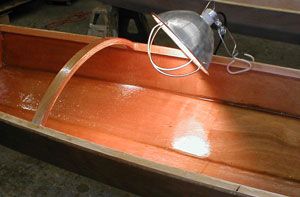
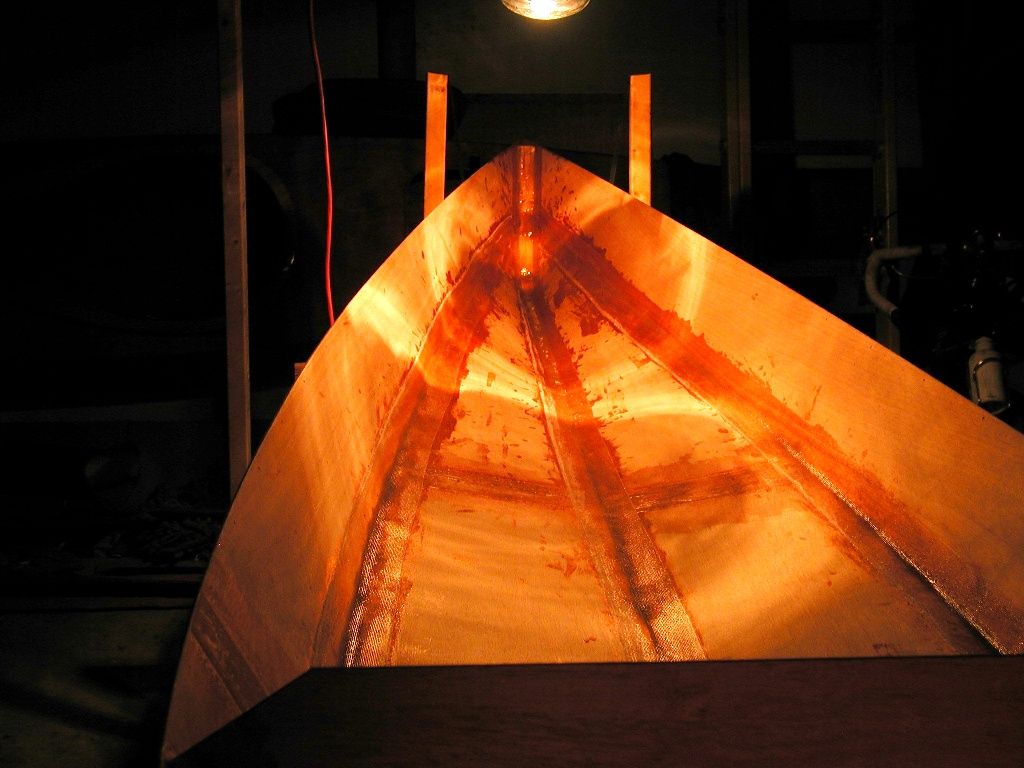
DON'T FORGET OUR EPOXY MIXING KIT EVERYTHING YOU NEED TO MEASURE, MIX, DISPENSE OR APPLY ANY OF OUR MAX EPOXY RESIN IN ONE CONVENIENT KIT Proportioning the correct amount is equally as important to attain the intended cured properties of the resin system. The container in which the epoxy and curing agent is mixed is an important consideration when mixing an epoxy resin system. The container must withstand the tenacity of the chemical and must be free of contamination. Most epoxy curing agent has a degree of corrosivity, as a general practice, protective gloves should be worn when handling chemicals of the same nature. 
MIXING KIT CONTENTS 4 each 32 ounce (1 Quart) clear HDPE plastic tubs 4 each 16 ounce (1 pint) clear HDPE plastic tubs 4 each clear HDPE plastic Lids for the plastic tubs 4 each 8 ounce (1/2-Pint) Wax Free Paper Cups 5 pairs one size fits all Powder Free Latex Gloves (Large) 6 Piece HDPE Plastic Measuring Spoon Kit (1 tablespoon to 1/8 teaspoon) 10 Piece HDPE Plastic Measuring Cup (1 Cup to 1/8 Teaspoon) 2 each None Sterile Graduated 10 cc Syringes 1 pack of Wooden Stir Sticks (Disposable Chopsticks) 1 pack Assorted Size Bristle Brush (5 per pack) 




For Technical Support Please Call TOLL FREE 877 403 8008 Mon-Fri 10:00 AM to 4:00 PM Pacific Standard Time
PLEASE CHECK OUT OTHER AVAILABLE RESIN SYSTEMS AT OUR eBAY STORE For our complete listing, please click here Visit our eBay store! NEED MORE INFORMATION?
Please visit our YouTube Channel to view our video demonstrations
IMPORTANT NOTICE
Your purchase constitutes the acceptance of this disclaimer. Please review before purchasing this product. The user should thoroughly test any proposed use of this product and independently conclude satisfactory performance in the application. Likewise, if the manner in which this product is used requires government approval or clearance, the user must obtain said approval. The information contained herein is based on data believed to be accurate at the time of publication. Data and parameters cited have been obtained through published information, PolymerProducts laboratories using materials under controlled conditions. Data of this type should not be used for a specification for fabrication and design. It is the user's responsibility to determine this Composites fitness for use. There is no warranty of merchantability of fitness for use, nor any other express implied warranty. The user's exclusive remedy and the manufacturer's liability are limited to refund of the purchase price or replacement of the product within the agreed warranty period. PolymerProducts and its direct representative will not be liable for incidental or consequential damages of any kind. Determination of the suitability of any kind of information or product for the use contemplated by the user, the manner of that use and whether there is any infringement of patents is the sole liability of the user.
THANKS FOR STOPPING BY
PLEASE VIEW THE FOLLOWING VIDEO PRESENTATION,
ALTHOUGH THE FEATURED EPOXY RESIN SYSTEM IS DIFFERENT THAN
THE MAX BOND LOW VISCOSITY, THE GENERAL TECHNIQUE AND PROPER MIXING PROCEDURE IS APPLICABLE.
USE THIS MIX TECHNIQUE TO ELIMINATE TACKY SPOTS, UNCURED SECTIONS AND POOR MECHANICAL PERFORMANCE THAT IS CAUSED BY POOR MIXING AND INCORPORATION OF THE RESIN AND CURING AGENT.
BASIC EPOXY RESIN MIXING AND USAGE APPLICATIONS
PLEASE VIEW THE FOLLOWING VIDEO FOR THE PROPER MIXING OF EPOXY RESINS. IT DEMONSTRATES THE PROPER TECHNIQUE OF MIXING ANY TYPE OF EPOXY RESIN. THE PROPER CURE AND FINAL PERFORMANCE OF ANY EPOXY RESIN SYSTEM IS HIGHLY DEPENDENT ON THE QUALITY AND THOROUGHNESS OF THE MIX. THE RESIN AND CURING AGENT MUST BE MIXED TO HOMOGENEOUS CONSISTENCY
THE PROPER CURE AND FINAL PERFORMANCE OF ANY EPOXY RESIN SYSTEM IS HIGHLY DEPENDENT ON THE QUALITY AND THOROUGHNESS OF THE MIXING QUALITY. THE RESIN AND CURING AGENT MUST BE MIXED TO HOMOGENEOUS CONSISTENCY TO ACHIEVE PROPER CURE AND TACK FREE RESULTS.

How to avoid tacky spots when using an epoxy resin: MAX EPOXY PROPER MIXING TECHNIQUE.wmv - YouTube
Video will open in a new window
Basic Epoxy Resin Usage - Avoiding Exothermic Runaway Reactions
Composite Fabricating Basics
By resolute definition, a fabricated COMPOSITE material is a manufactured collection of two or more ingredients or products intentionally combined to form a new homogeneous material that is defined by its performance that should uniquely greater than the sum of its individual parts. This method is also defined as SYNERGISTIC COMPOSITION.
COMPOSITE MATERIAL COMPOSITION
REINFORCING FABRIC & IMPREGNATING RESIN
 PLUS
PLUS
ENGINEERED PROCESS
EQUALS
STRUCTURAL STRENGTH COMPOSITE LAMINATE

With respect to the raw materials selection (fabric and resin), the fabricating process and the intended composite properties, these 3 aspects must be carefully considered and in the engineering phase of the composite.
NEED MORE INFORMATION?
Please visit our YouTube Channel to view our video demonstrations
- Tow: The bundle of individual carbon filaments used to weave carbon fabric. 50k tow means there are 48-50,000 carbon filaments in the tow. Smaller tow i.e. 12k, 6k, 3k and 1k are obtained by dividing the 50k tow into smaller bundles.
- Thread Count: The number of threads (tow in carbon and yarn in Aramid) per inch. The first number will be the warp count and the second will be the fill count.
- Fill: The threads that run the width of the roll or bolt and perpendicular to the warp threads.
- Warp: The threads that run the length of the roll or bolt and perpendicular to the fill threads.
- Finish: The chemical treatment to fiberglass making it compatible with resin systems, therefore improving the bond between the fiber and the resin. Finishing fiberglass typically decreases the fiber strength by as much as 50%. Both Silane and Volan finishes are epoxy compatible. Historically, Volan has been considered a softer finish for a more pliable fabric, but recent advances have yielded some excellent soft Silane finishes.
- Thickness: Measured in fractions of an inch. The thicker the fabric the more resin required to fill the weave to obtain a surface smooth finished part.
Weaves:
-
Plain weave means the warp and fill threads cross alternately. This is the most common weave.
-
4 Harness (4 HS Satin or crowfoot) weave means the fill thread floats over three warp threads, then under one warp thread. This weave is more pliable than the plain weave, therefore conforms to complex curves more easily.
-
8 Harness (8 HS Satin) weave means the fill thread floats over seven warp threads, then under one warp thread. This weave is the most pliable of the standard fiberglass weaves.
-
2 x 2 Twill weave means the fill thread floats over two warp threads, then fewer than two warp threads. This weave is found most commonly in carbon fabrics and is more pliable than plain weave.
Most fabrics are stronger in the warp than the fill because higher tension is placed on the warp fiber keeping it straighter during the weaving process. Rare exceptions occur when a larger, therefore stronger thread is used in the fill direction than the warp direction.
|
PLAIN WEAVE Is a very simple weave pattern and the most common style. The warp and fill yarns are interlaced over and under each other in alternating fashion. Plain weave provides good stability, porosity and the least yarn slippage for a given yarn count. |
8 HARNESS SATIN WEAVE The eight-harness satin is similar to the four-harness satin except that one filling yarn floats over seven warp yarns and under one. This is a very pliable weave and is used for forming over curved surfaces. |
4 HARNESS SATIN WEAVE The four-harness satin weave is more pliable than the plain weave and is easier to conform to curved surfaces typical in reinforced plastics. In this weave pattern, there is a three by one interfacing where a filling yarn floats over three warp yarns and under one. |
2x2 TWILL WEAVE Twill weave is more pliable than the plain weave and has better drivability while maintaining more fabric stability than a four or eight harness satin weave. The weave pattern is characterized by a diagonal rib created by one warp yarn floating over at least two filling yarns. |
|
|
|
|
|
|
RESIN COMPATIBILITY |
Burlington Industries |
Clark Schwebel |
J.P Stevens |
Uniglass Industries |
|
Epoxy, Polyester |
VOLAN A |
VOLAN A |
VOLAN A |
VOLAN A |
|
Epoxy, Polyester |
I-550 |
CS-550 |
S-550 |
UM-550 |
|
Phenolic, Melamine |
I-588 |
A1100 |
A1100 |
A1100 |
|
Epoxy, Polyimide |
I-589 |
Z6040 |
S-920 |
UM-675 |
|
Epoxy |
I-399 |
CS-272A |
S-935 |
UM-702 |
|
Epoxy |
|
CS-307 |
|
UM-718 |
|
Epoxy |
|
CS-344 |
|
UM-724 |
|
Silicone |
112 |
112 |
|
n-pH (neutral pH) |
The fabric is more pliable and can comply with complex contours and spherical shapes. Because of its tight weave style,
satin weaves are typically used as the surface ply for heavier and courser weaves.
This technique helps reduce fabric print through and requires less gel coat to create a smoother surface.

Step Three:
Proper Lay-Up Technique
Pre-lay-up notes
Lay out the fabric and pre-cut to size and set aside
Avoid distorting the weave pattern as much as possible
For fiberglass molding, ensure the mold is clean and adequate mold release is used
View our video presentation above "MAX EPOXY RESIN MIXING TECHNIQUE"
Mix the resin only when all needed materials and implements needed are ready and within reach
Mix the proper amount of resin needed and be accurate proportioning the resin and curing agent. Adding more curing agent than the recommended mix ratio will not promote a faster cure. Over saturation or starving the fiberglass or any composite fabric will yield poor mechanical performance. When mechanical load or pressure is applied to the composite laminate, the physical strength of the fabric should bear the stress and not the resin. If the laminate is over saturated with the resin it will most likely to fracture or shatter instead of rebounding and resist damage.
Don’t how much resin to use to go with the fiberglass?
A good rule of thumb is to maintain a minimum of 30 to 35% resin content by weight, this is the optimum ratio used in high-performance prepreg (or pre-impregnated fabrics) typically used in aerospace and high-performance structural application.For general hand lay-ups, calculate using 60% fabric weight to 40% resin weight as a safety factor. This will ensure that the fabricated laminate will be below 40% resin content depending on the waste factor accrued during fabrication.
Place the entire pre-cut fiberglass to be used on a digital scale to determine the fabric to resin weight ratio. Measuring by weight will ensure accurate composite fabrication and repeatability, rather than using OSY data.
Typical fabric weights regardless of weave pattern
1 yard of 8 OSY fabric at 38 inches wide weighs 224 grams
1 yard of 10 OSY fabric at 38 inches wide weighs 280 grams
Ounces per square yard or OSY is also known as aerial weight which is the most common unit of measurement for composite fabrics.
To determine how much resin is needed to adequately impregnate the fiberglass, use the following equation:
(Total Weight of Fabric divided by 60%)X( 40%)= weight of mixed resin needed
OR
fw= fabric weight
rc= target resin content
rn=resin needed
MASTER EQUATION
(fw/60%)x(40%)=rn
FOR EXAMPLE
1 SQUARE YARD OF 8-OSY FIBERGLASS FABRIC WEIGHS 224 GRAMS
(224 grams of dry fiberglass / 60%) X 40% = 149.33 grams of resin needed
So for every square yard of 8-ounce fabric,
It will need 149.33 grams of mixed resin.
Computing for resin and curing agent requirements based on
149.33 grams of resin needed
MIX RATIO OF RESIN SYSTEM IS 2:1 OR
50 PHR (per hundred resin)
2 = 66.67% (2/3)
+
1 = 33.33%(1/3)
=
(2+1)=3 or (66.67%+33.33%)=100% or (2/3+1/3)= 3/3
149.33x 66.67%= 99.56 grams of Part A RESIN
149.33x 33.33%= 49.77 grams of Part B Curing Agent
99.56+ 49.77 = 149.33 A/B MIXTURE
Apply the mixed resin onto the surface and then lay the fabric and allow the resin to saturate through the fabric.
NOT THE OTHER WAY AROUND
This is one of the most common processing error that yields sub-standard laminates. By laying the fiberglass onto a film of resin, fewer air bubbles are entrapped during the wetting-out stage. Air is pushed up and outwards instead of forcing the resin through the fabric which will entrap air bubbles. This technique will displace air pockets unhindered and uniformly dispersed throughout the fiberglass with minimal mechanical agitation or by spreading.







DETERMINATION OF FIBER TO RESIN RATIO
PLACE CURSOR ON THE PICTURE TO PAUSE AND PLAY SLIDE SHOW

For Vacuum Bagging And Resin Infussion Process

Similar to "addition cure" or catalytic polymerization, Ultraviolet Curing is another method that has gained popular use in the polymer adhesives and coatings application. It offers a unique curing mechanism that converts a liquid polymer into a solid plastic upon exposure to UV radiation. The two common commercially significant method are "FREE RADICAL INITIATION" and CATIONIC REACTION. In both reaction polymerization occurs via decomposition of a Photoinitiator blended within the resin system; upon exposure to the adequate wavelength of Ultraviolet energy the photoinitiator degrades and cause a ring opening or cleavage of the photoinitiator molecule and induces rapid polymerization or cross-linking.
The polymerization reaction can be either free radical or cationic and occurs almost instantaneous creation of a polymer network.
POSSIBLE HEAT CURING TECHNIQUES








NEED MORE INFORMATION?
Please visit our YouTube Channel to view our video demonstrations
IMPORTANT NOTICE
Your purchase constitutes the acceptance of this disclaimer. Please review before purchasing this product. The user should thoroughly test any proposed use of this product and independently conclude satisfactory performance in the application. Likewise, if the manner in which this product is used requires government approval or clearance, the user must obtain said approval. The information contained herein is based on data believed to be accurate at the time of publication. Data and parameters cited have been obtained through published information, PolymerProducts laboratories using materials under controlled conditions. Data of this type should not be used for a specification for fabrication and design. It is the user's responsibility to determine this Composites fitness for use. There is no warranty of merchantability of fitness for use, nor any other express implied warranty. The user's exclusive remedy and the manufacturer's liability are limited to refund of the purchase price or replacement of the product within the agreed warranty period. PolymerProducts and its direct representative will not be liable for incidental or consequential damages of any kind. Determination of the suitability of any kind of information or product for the use contemplated by the user, the manner of that use and whether there is any infringement of patents is the sole liability of the user.
THANKS FOR STOPPING BY










